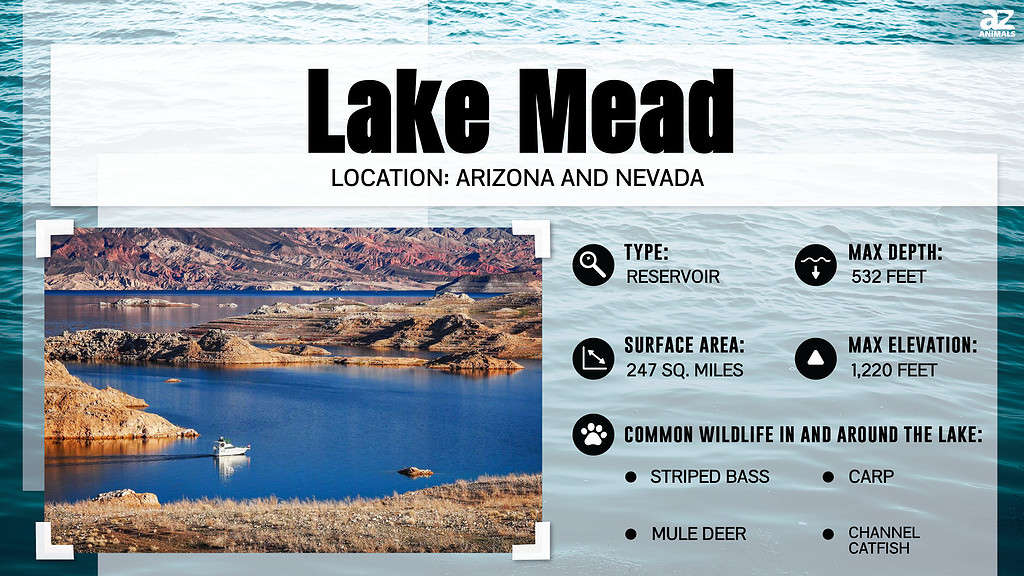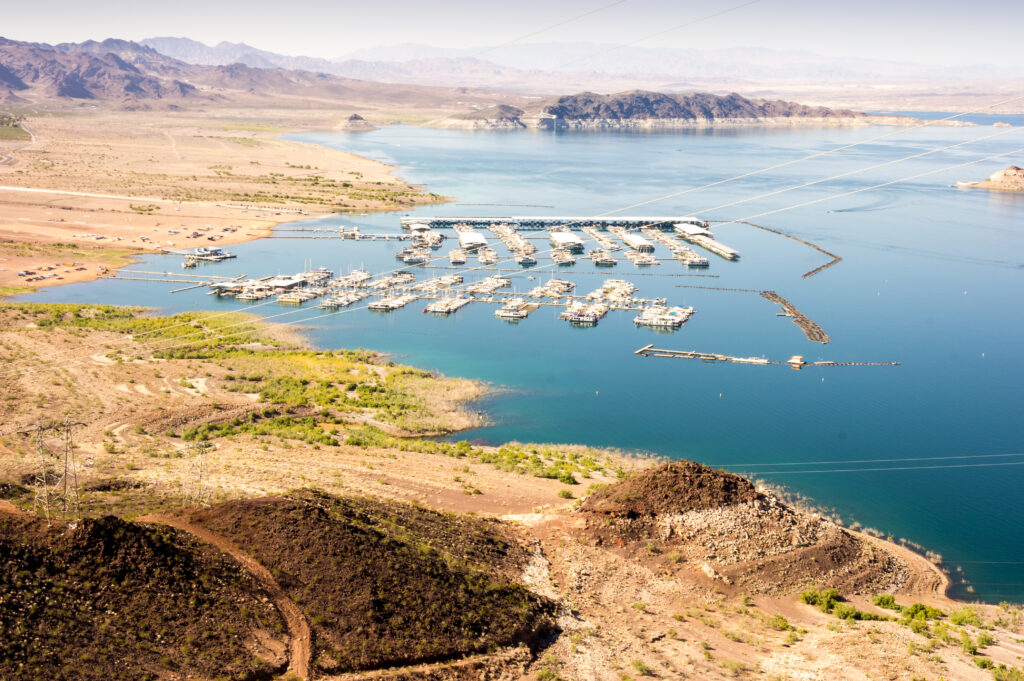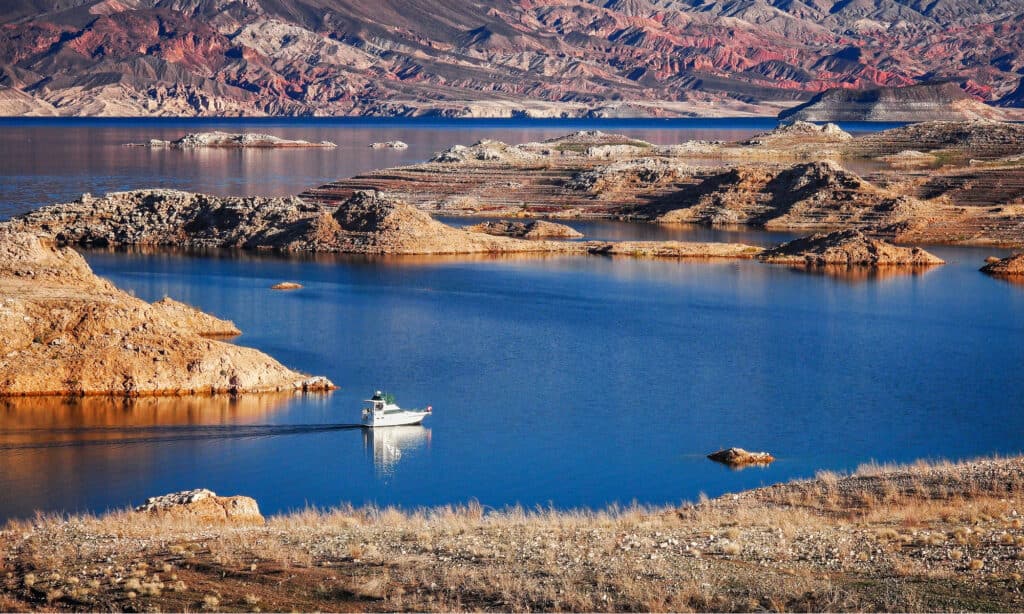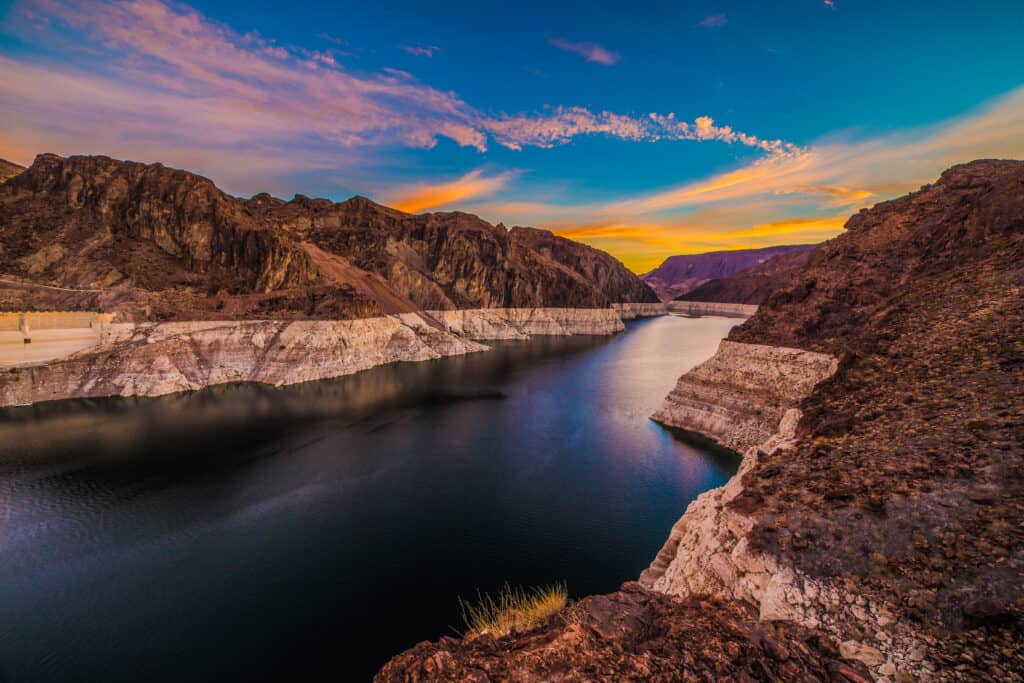
Lake Mead, the largest reservoir in North America, has been facing a severe water crisis for years due to a combination of drought, climate change, and growing regional demand. Thankfully, things look to be changing, but what does that mean? Let’s find out.

Lake Mead has been experiencing historic lows, but things appear to have started to recover, according to the most recent data from the past few months.
©Sopotnicki/Shutterstock.com
Lake Mead was formed by the Hoover Dam on the Colorado River. Today it supplies water to nearly 25 million people and huge agricultural areas in Arizona, Nevada, California, and Mexico. However, its water levels have reached historic lows, dropping to about 30 percent of its capacity and less than 150 feet away from a “dead pool” — when the reservoir is so low that water cannot flow downstream from the dam. This situation has triggered unprecedented water cuts and raised concerns about the future of the lake and the region that depends on it.
Lake Mead’s water crisis is caused by a combination of drought, climate change, and overuse. Less snow in winter means less water to replenish the lake in spring. More heat and evaporation reduce the flows of the Colorado River. More demand for water exceeds the river’s supply. Altogether, it’s no wonder the Lake has ended up in the position it’s in now.
A Much-Needed Improvement

Although Lake Mead has started to recover, it still has a long way to go before it is stable and healthy.
©CrackerClips Stock Media/Shutterstock.com
After reaching record lows in 2022, Lake Mead has seen some signs of recovery in 2023 thanks to a precipitation-heavy winter that increased the snowpack throughout the Colorado River Basin. According to the U.S. Bureau of Reclamation, the lake’s water level on May 2, 2023, was measured at 1,049.75 feet, almost 6 feet above the projected level and nearly 40 feet higher than it was in December 2022.
As a result, the unexpected rise brought some relief to not just the lake but the millions of people that rely on the lake for recreation and tourism. However, experts warn this improvement is only temporary and does not change the long-term outlook for the lake or the region. Notably, climate change is still a hugely relevant factor for the area, especially the future of Lake Mead.
What Does This Mean for the Region?

Boating on Lake Mead will be determined primarily by location, although the rising water levels will help make some popular docks more accessible.
©fellswaymedia/Shutterstock.com
Docking Status for Lake Mead as of May 2nd, 2023
| Location | Small Motorized Vessels | Non-Motorized Vessels | More Information |
|---|---|---|---|
| Hemenway Harbor | Operable | Operable | Two lanes on pipemat, and only shallow-hulled boats not exceeding 24′ in length. |
| Callville Bay | Launch at your own risk | Launch at your own risk | Concessionaire launch operations are operable. Under 40′ length recommended. NPS facilities are inoperable. Please contact the concessionaire directly at 702-565-8958 to inquire about the launch ramp status. |
| Echo Bay | Operable | Operable | One lane on pipemat. |
| Boulder Harbor | Inoperable | Inoperable | Inoperable due to low water levels. |
| Temple Bar | Launch at your own risk | Launch at your own risk | Concessionaire launch operations are operable. Under 40′ length recommended. NPS facilities are inoperable. Please contact the concessionaire directly at 928-767-3214 to inquire about the launch ramp status. |
| South Cove | Inoperable | Inoperable | Inoperable due to low water levels. Launching is available off the dirt road south of the launch ramp. Launch at your own risk. Four-wheel-drive recommended. |
The rise of Lake Mead is a welcome relief for the millions of people who depend on its water. However, it does not mean the water crisis is over.
The lake is still far below its normal levels and faces the threat of further decline due to climate change and overuse. Because of this, the U.S. Bureau of Reclamation declared the Colorado River’s first-ever water cuts in 2023, affecting Arizona, Nevada, California, and Mexico. These cuts will primarily impact agriculture but could also affect urban areas and wildlife habitats if the drought persists.
Experts say that more conservation efforts and cooperation among states are needed to ensure the long-term sustainability of the lake and the region. Additionally, they also warn more extreme weather events, such as floods and fires, could pose additional challenges for water management in the future.
Things change daily, sometimes hourly, for anyone looking for information about boating or other water activities. Obviously, you should check the NPS’s website and Launch Ramp Status for the most up-to-date information for boating and other water activities for the summer!
The photo featured at the top of this post is © trekandshoot/Shutterstock.com
Thank you for reading! Have some feedback for us? Contact the AZ Animals editorial team.






